This easy lemon bundt cake is a must-try for lemon lovers! Moist, sweet, and full of lemon flavor from fresh lemon juice, zest, and a lemony glaze, it is a simple but impressive dessert for any occasion. The balanced sweetness and tart citrus flavors are a hit every time.
If you’re concerned about the cake sticking to your Bundt pan, don’t worry! I share tips for the best way to grease your pan to minimize this issue. It also matters when you prepare the pan in the recipe, so read on for all the details! And for more cake recipes, try my crepe cake, cream cheese pound cake, and hummingbird cake.
Ingredients
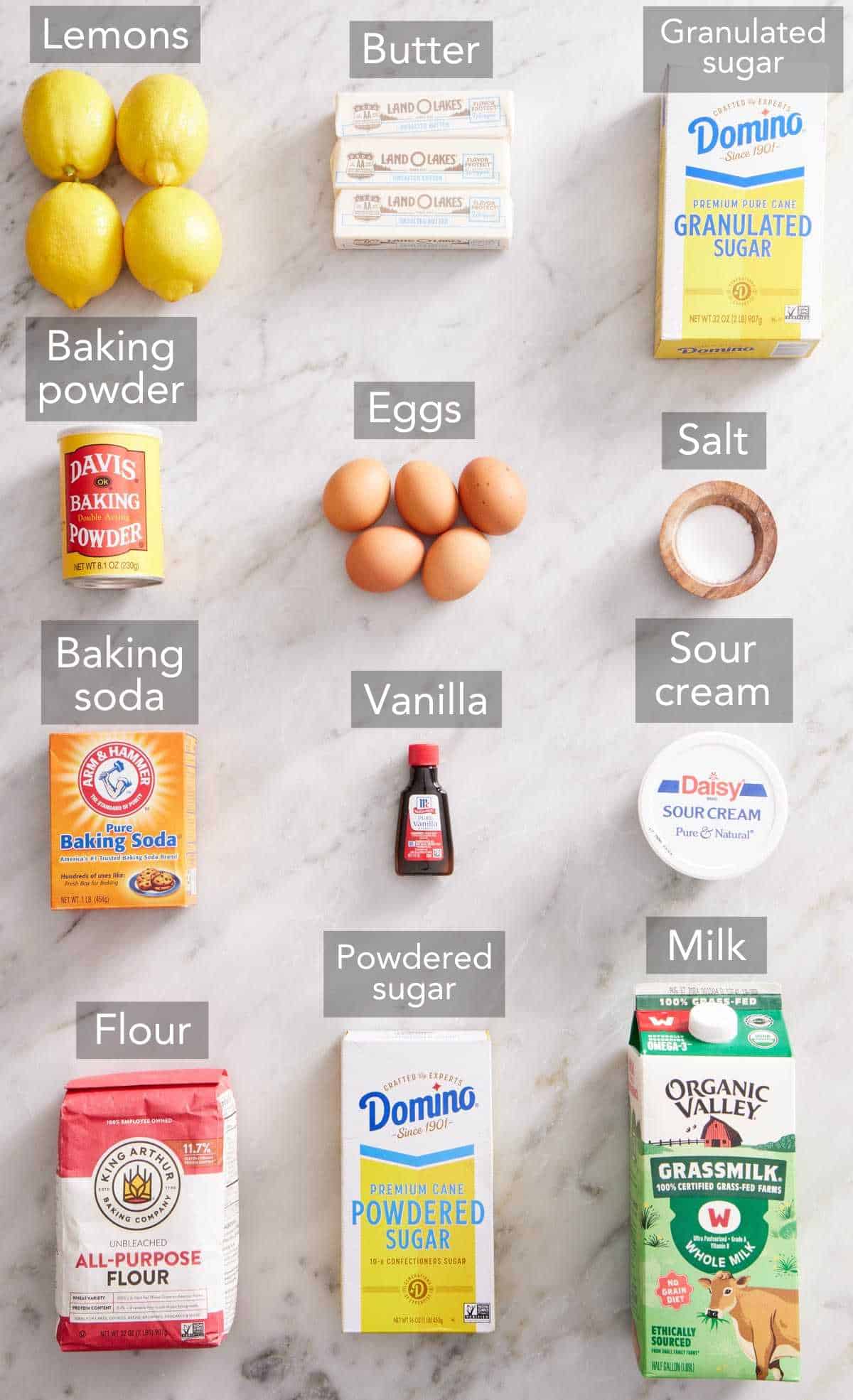
These are the handful of essential ingredients you need to make a lemon bundt cake. Get the full list of ingredients with measurements in the recipe card below!
Butter — this lemon bundt cake recipe contains additional salt, so use unsalted butter to avoid a salty cake! It needs to be softened before you begin, so check out my guide on how to soften butter for quick tips if you forget!
Sugar — granulated sugar adds sweetness and moisture to the cake batter.
Lemons — using fresh lemon juice and lemon zest means the cake is simply bursting with lemon flavor. You really need the zest for this cake, so don’t substitute fresh for bottled lemon juice. You will need 4 to 5 whole lemons to have enough zest and juice for this lemon bundt cake recipe.
Sour cream — sour cream keeps this cake delicious and moist for days! You all know how much I love adding sour cream to cakes (it’s my secret to perfect, moist vanilla cupcakes!). Use a full-fat sour cream for the richest cake.
Lemon glaze — to make this twist on my lemon glaze recipe, you need powdered sugar, lemon juice, melted butter, and a pinch of salt. You can add more lemon zest for pretty yellow flecks in the glaze, if desired.
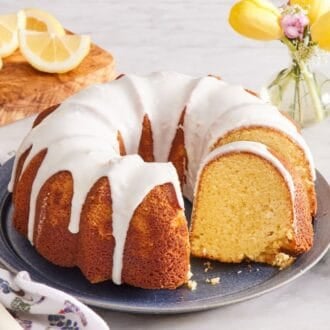
Lemon Bundt Cake Recipe
Equipment
- 10 to 12-cup Bundt pan
- Stand Mixer with paddle attachment
- Wire cooling rack
- Microplane or zester
Ingredients
Lemon Bundt Cake:
- 3 cups all-purpose flour (360g)
- 2 teaspoons baking powder
- 1 teaspoon salt
- ¼ teaspoon baking soda
- 1 cup unsalted butter room temperature (227g)
- 2 cups granulated sugar (400g)
- 2 tablespoons lemon zest
- 5 large eggs room temperature
- 2 teaspoons vanilla extract
- ½ cup whole milk (120mL)
- ⅓ cup sour cream (80g)
- ¼ cup fresh lemon juice (60mL)
Lemon Glaze:
- 2 cups powdered sugar (240g)
- 3 to 4 tablespoons lemon juice divided (45 to 60mL)
- 1 tablespoon melted butter
- Pinch of salt
- ½ teaspoon lemon zest optional
Instructions
For the Cake:
- Preheat the oven to 350°F.
- In a large bowl, whisk to combine the flour, baking powder, salt, and baking soda.
- In a large mixing bowl or the bowl of a stand mixer fitted with the paddle attachment, beat butter, sugar, and lemon zest on medium speed for about 3 minutes, until lightened, fluffy, and fragrant.
- Add the eggs one at a time while mixing on medium speed, scraping the bowl down once or twice. Beat in the vanilla.
- In a liquid measuring cup, whisk to combine the milk, sour cream, and lemon juice.
- Add one-third of the flour mixture, mixing on low speed until combined. Add half of the milk mixture, and mix until combined. Repeat, alternating with the rest of the flour and milk mixtures.
- Butter and flour a 10- to 12-cup Bundt pan or spray with baking spray with flour.
- Pour the cake batter into the pan and tap gently on the counter a few times to settle the batter.
- Bake for 50 minutes or until golden brown and a toothpick inserted into the center comes out with a few moist crumbs.
- Let cool in the pan for 20 minutes. Turn onto a cooling rack and let cool completely.
For the Glaze:
- In a small bowl, whisk together the powdered sugar, 3 tablespoons lemon juice, butter, salt, and lemon zest, if using.
- Add additional lemon juice, ½ teaspoonful at a time, until the icing is smooth, thick, and pourable. Pour over top of the cooled cake. Let sit until hardened.
Notes
- If you really love the flavor of lemon, I recommend increasing the amount of lemon zest in the cake to 3 tablespoons (3-4 lemons). Add the extra lemon zest if you plan on skipping the lemon glaze, as well.
- The icing should be thick and slowly move down the sides of the cake rather than run down and pool on the base of the cake plate. If it’s too thick and not running much at all, add water or additional lemon juice by the ½ teaspoonful. If it’s too thin, whisk in additional powdered sugar 1 tablespoon at a time.
Nutrition
How To Make Lemon Bundt Cake
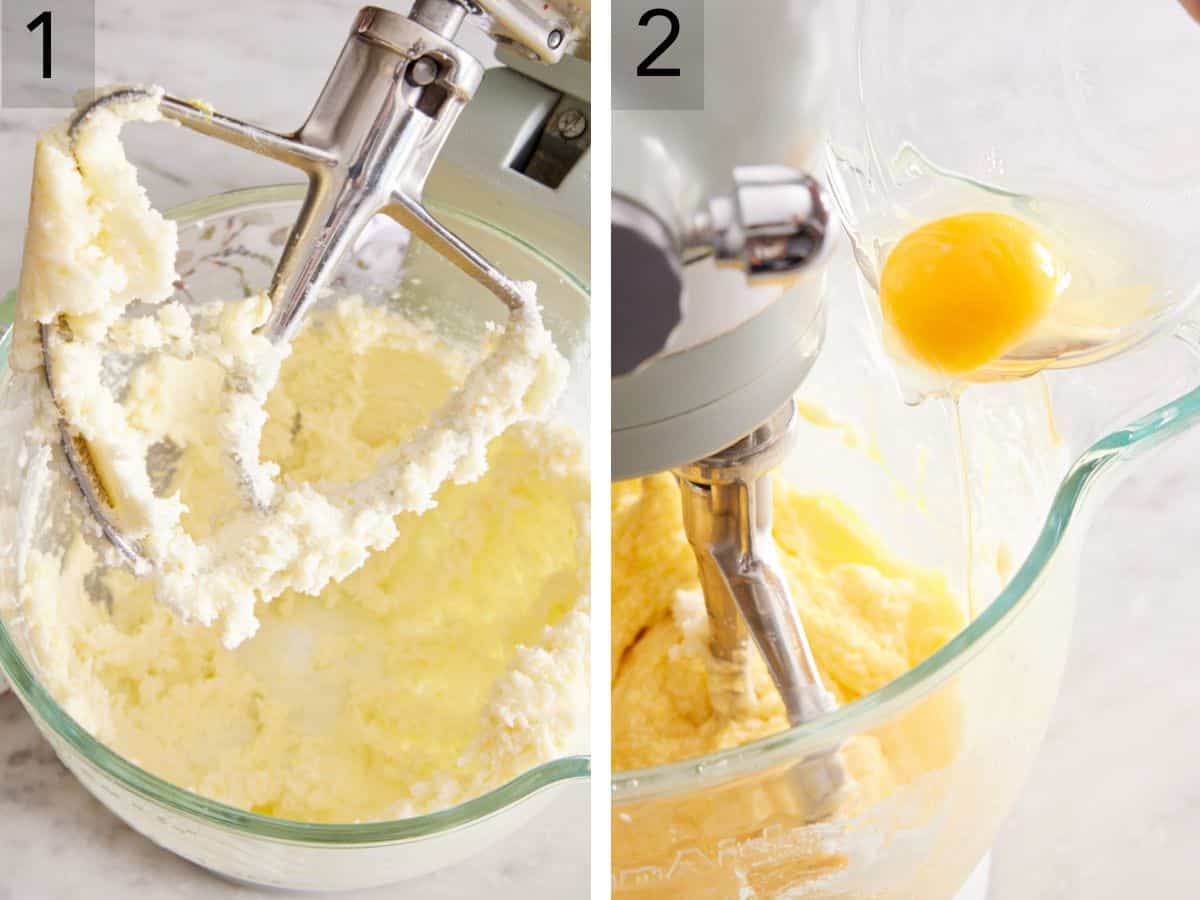
1. In a large bowl, whisk together the dry ingredients and set aside. In the bowl of a stand mixer fitted with the paddle attachment, beat the butter, sugar, and lemon zest on medium speed until light and fluffy.
2. Add the eggs one at a time, then beat in the vanilla extract. In a liquid measuring cup, whisk together the milk, sour cream, and lemon juice.
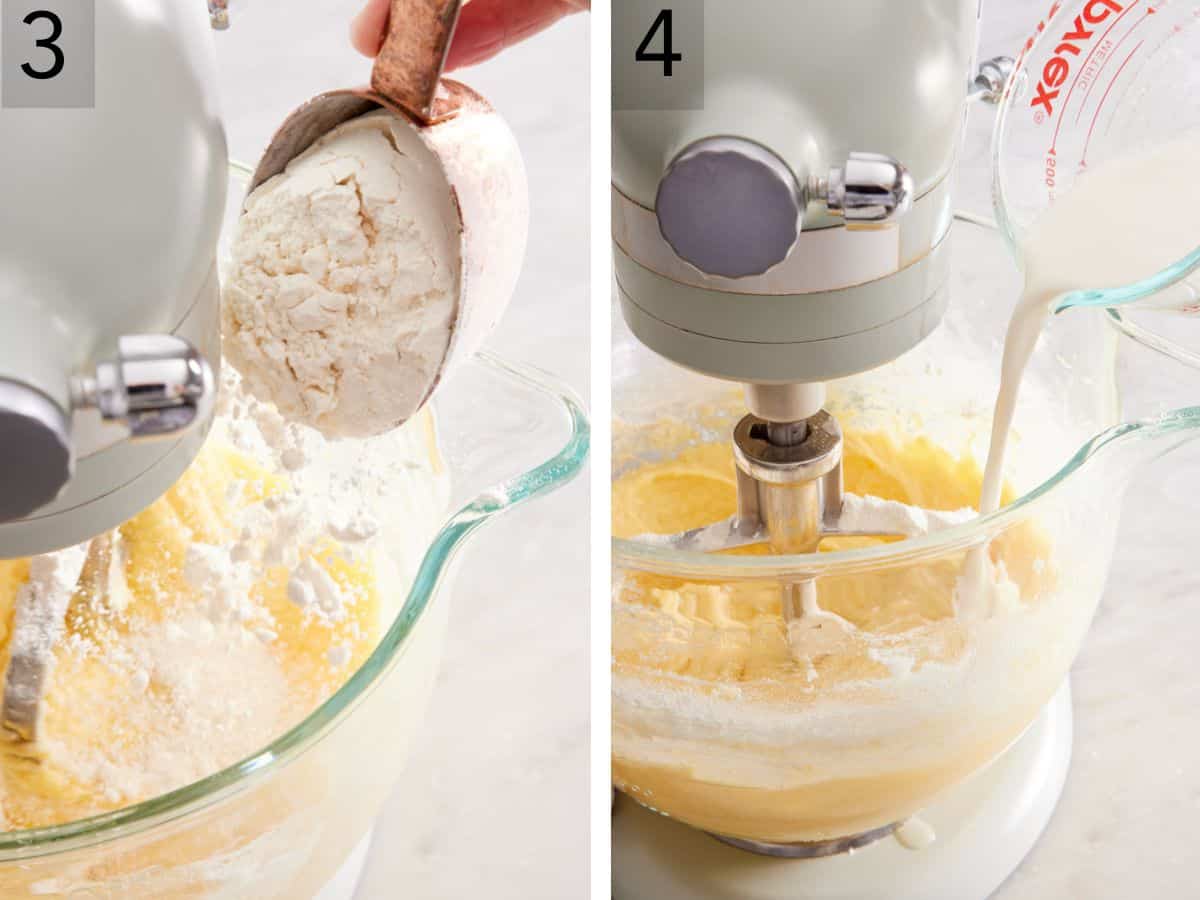
3. Add one-third of the flour mixture to the wet ingredients in the stand mixer and mix to combine.
4. Then add half of the milk mixture and mix again. Repeat this process of alternating until you’ve used up all the flour mixture and milk mixture.
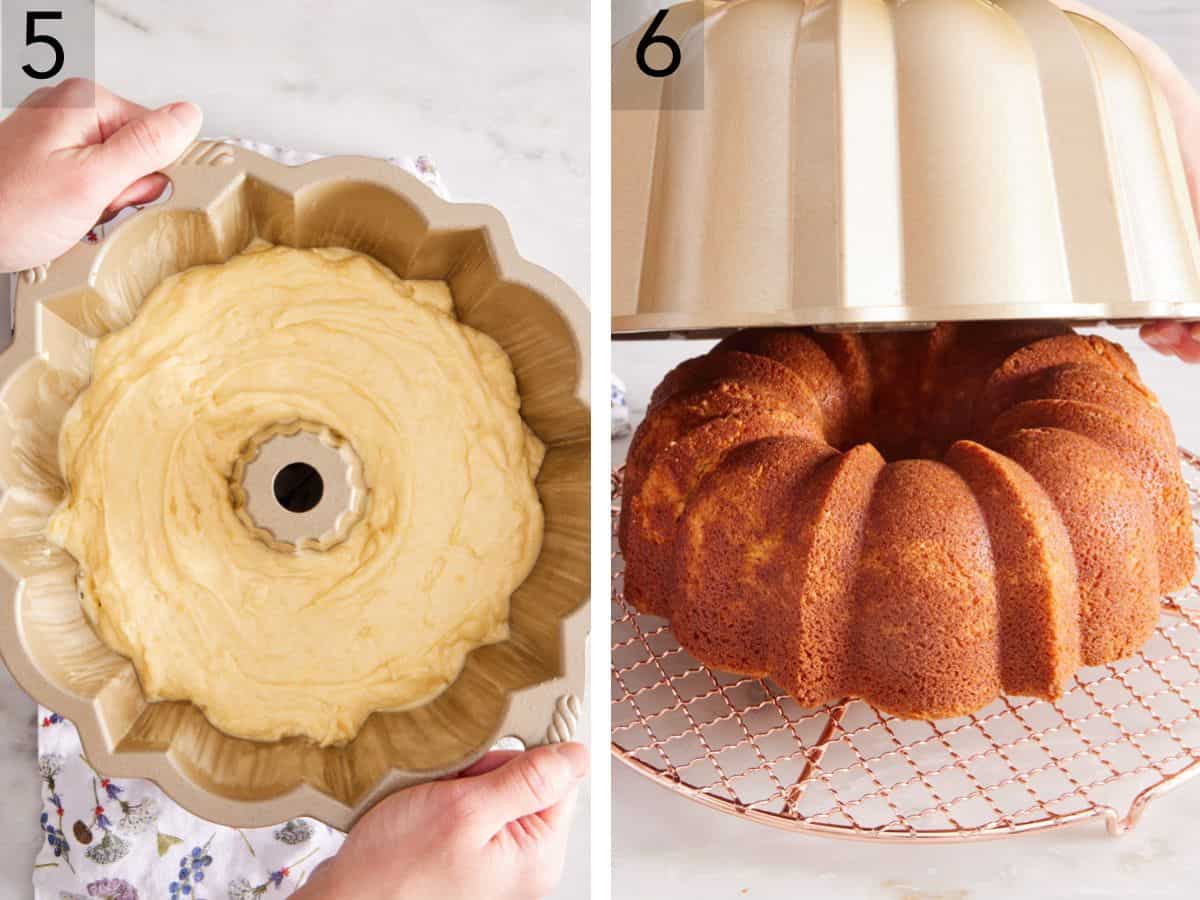
5. Grease the Bundt cake pan and pour the cake batter into the prepared pan. Bake at 350°F until a toothpick inserted comes out with a few moist crumbs.
6. Let the lemon bundt cake cool in the pan for 20 minutes, then invert onto a cooling rack to cool completely.
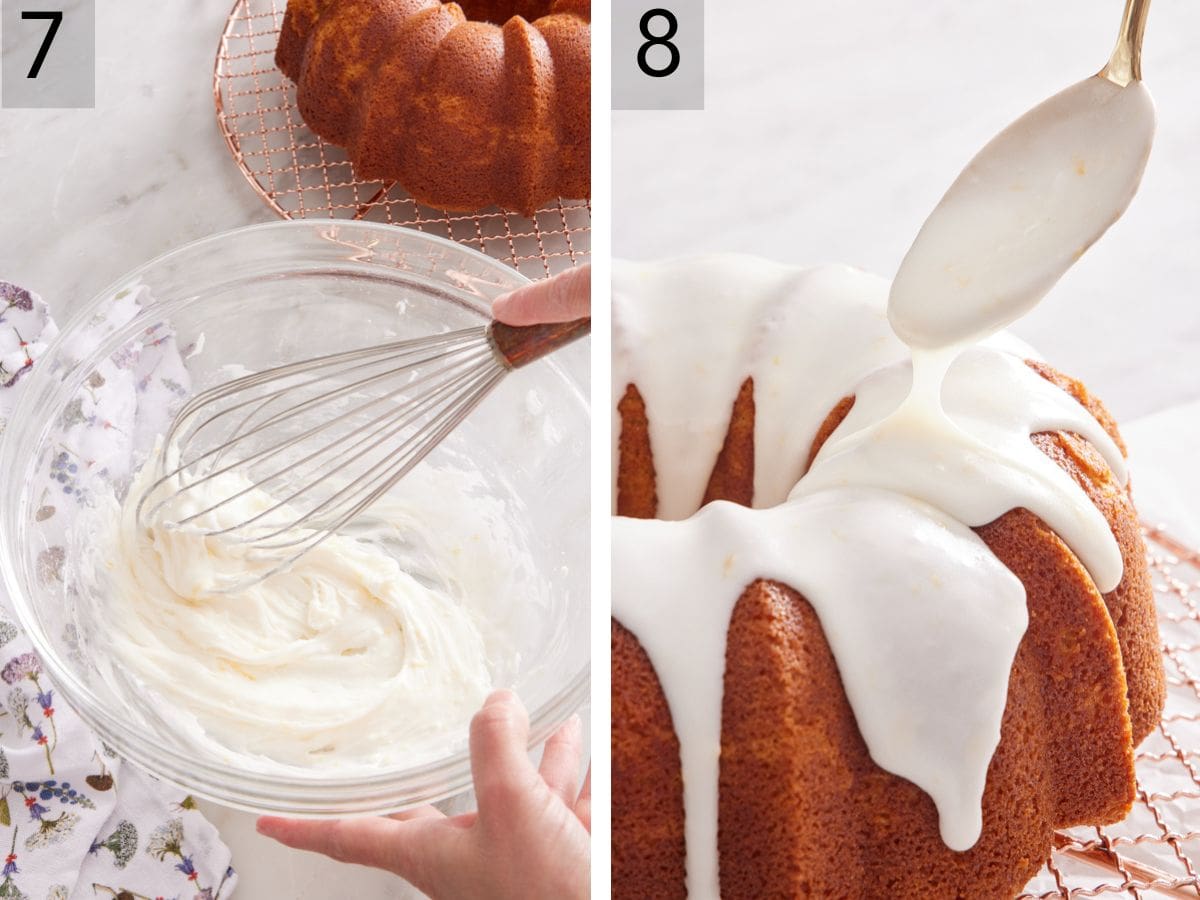
7. Make the lemon glaze in a small bowl by whisking together the powdered sugar, 3 tablespoons of lemon juice, butter, salt, and lemon zest. You can add more lemon juice by the ½-teaspoon until the icing reaches a thick, pourable consistency.
8. Pour the lemon icing over the top of the cake and allow it to sit until the glaze hardens.
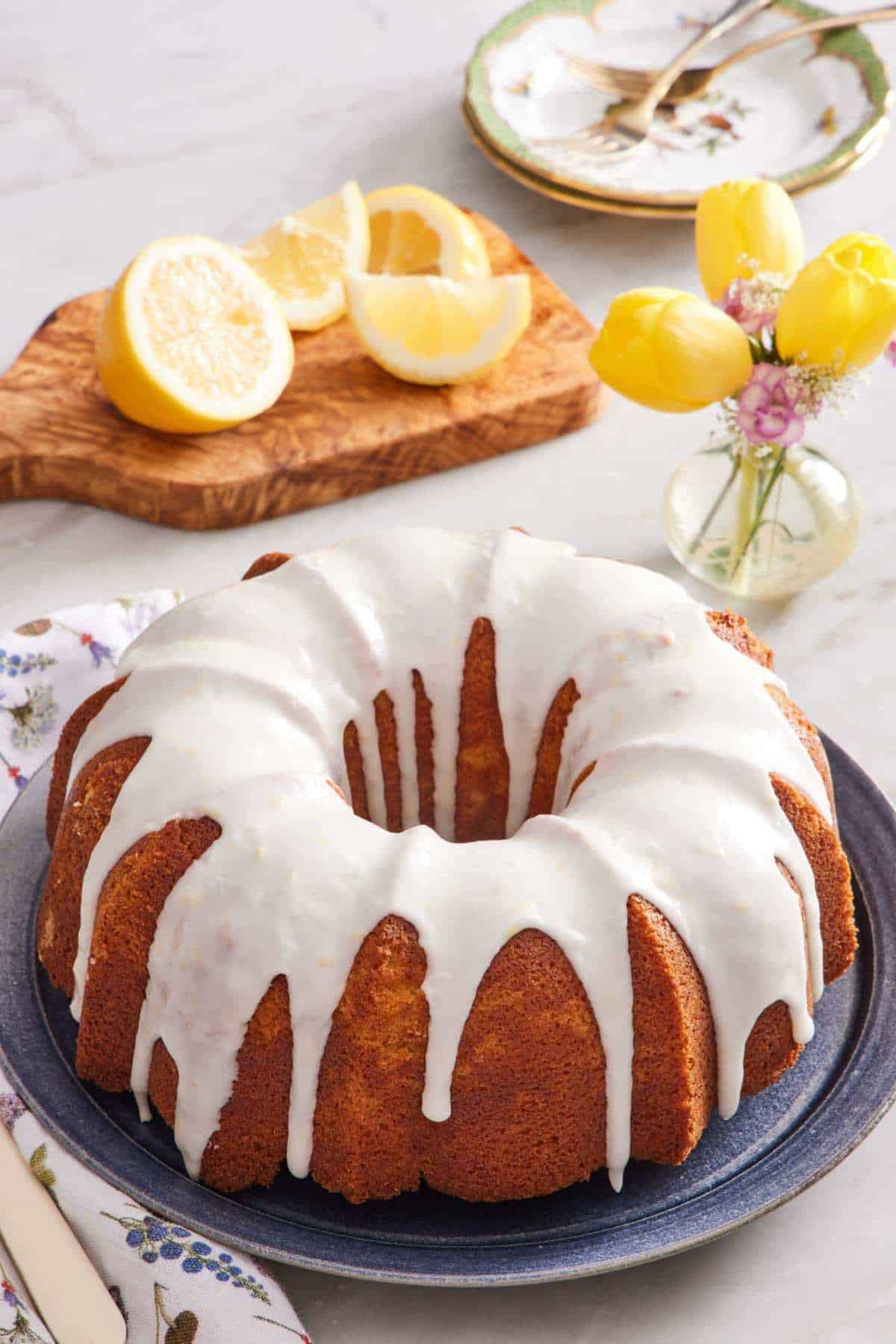
What’s The Best Way To Keep A Cake From Sticking To A Bundt Pan?
There’s nothing worse than flipping the Bundt pan over and realizing the cake you worked so hard on is stuck inside! Using fat AND flour to grease the pan is key to avoiding this. There are two options to correctly grease a Bundt pan:
- Use a nonstick baking spray that contains flour (Pam or Baker’s Joy both work well).
- Brush the pan with a light coating of very soft butter, then sprinkle flour using a fine mesh sieve all over the inside. Flip the pan over and tap it to remove excess flour.
If your cake happens to stick a little bit and the outer crust looks slightly uneven because some was left in the pan, don’t worry! Just cover it with the lemon glaze. No one will be the wiser!
Grease the Bundt Pan When The Batter is Done
Have you ever baked a bundt cake and had the bottom of the sides stick to the pan or ended up with a very visible line running around the center of your cake? This can happen if you spray the pan with baking spray at the start of the recipe. While you make the cake batter, the spray will slowly run down the pan and settle into the bottom, which can cause the sides to stick since they are no longer properly greased.
So, unlike most of my cake recipes where you prepare the cake pans first, I actually grease a Bundt pan after the batter is mixed to avoid this happening.
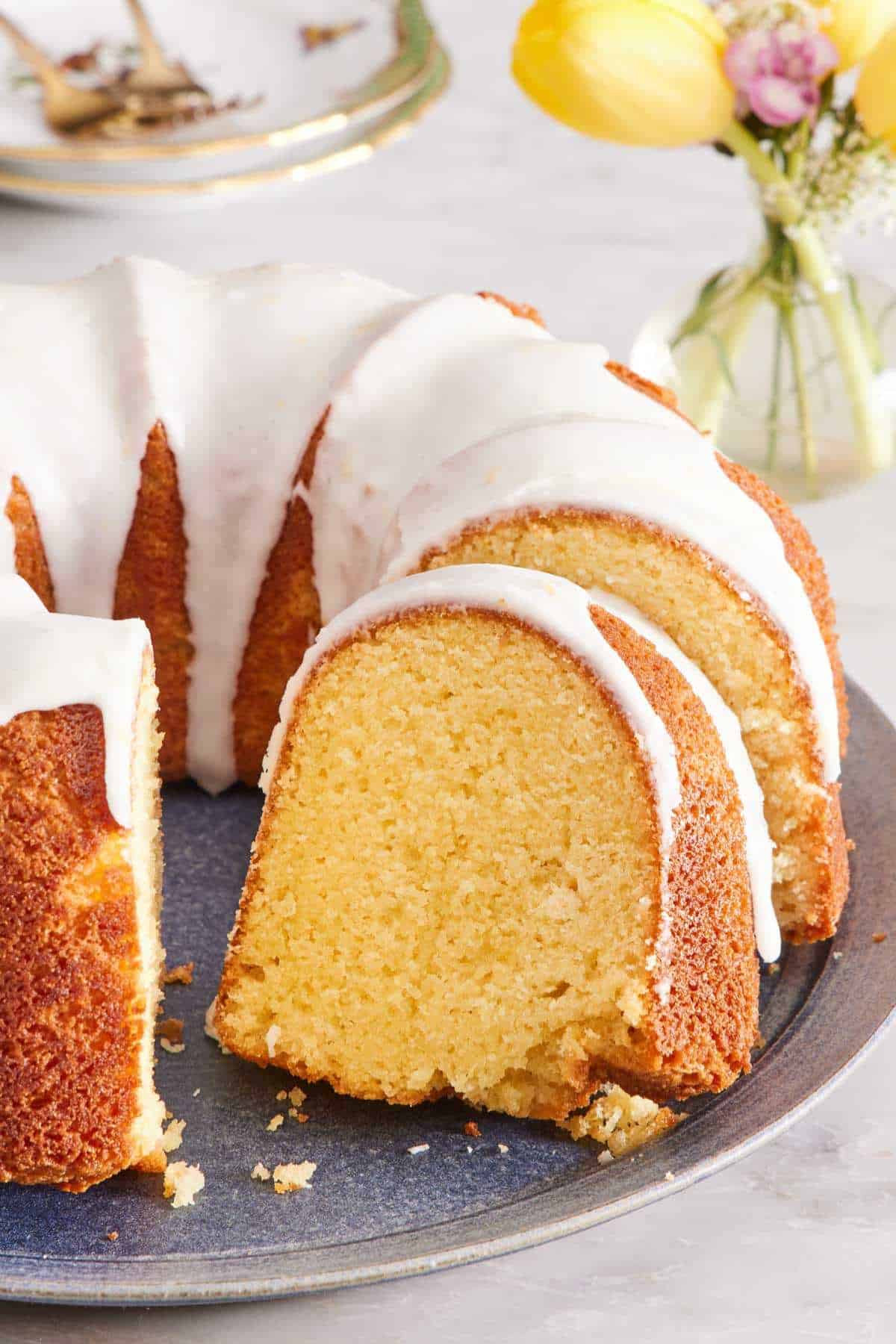
Use A Less Decorative Bundt Pan
To help further prevent the cake from sticking, don’t use a Bundt pan with a very intricate design. This cake is moist and tender, and a Bundt pan with a detailed design may hold onto the cake and cause it to stick and tear when inverted. Also be sure to use at minimum a 10- to 12-cup Bundt pan to avoid the batter overflowing during baking.
Pro Tips For Making This Recipe
- Weigh the flour. Using too much flour will cause the lemon bundt cake to turn out dry. Weighing it using a kitchen scale is a good way to avoid this. If you don’t have one, fluff the flour in its container to aerate it, spoon it into your measuring cup, and level off the top with a knife.
- Use room temperature ingredients. Set the refrigerated ingredients out in advance, which makes them easier to incorporate into a cohesive batter.
- Rub the sugar and zest together first for extra lemon flavor. Use your fingertips to rub them together. The coarseness of the sugar helps the lemon zest release its oils for an extra burst of citrus flavor.
- Don’t cool the cake completely in the pan. After it cools in the pan for 20 minutes, invert the cake onto a wire rack to finish cooling. Leaving it in the hot pan for too long will cause the edges to keep cooking, which will make it stick.
- Let the cake cool before glazing. Otherwise, the glaze will slide right off or melt and disappear into the cake.
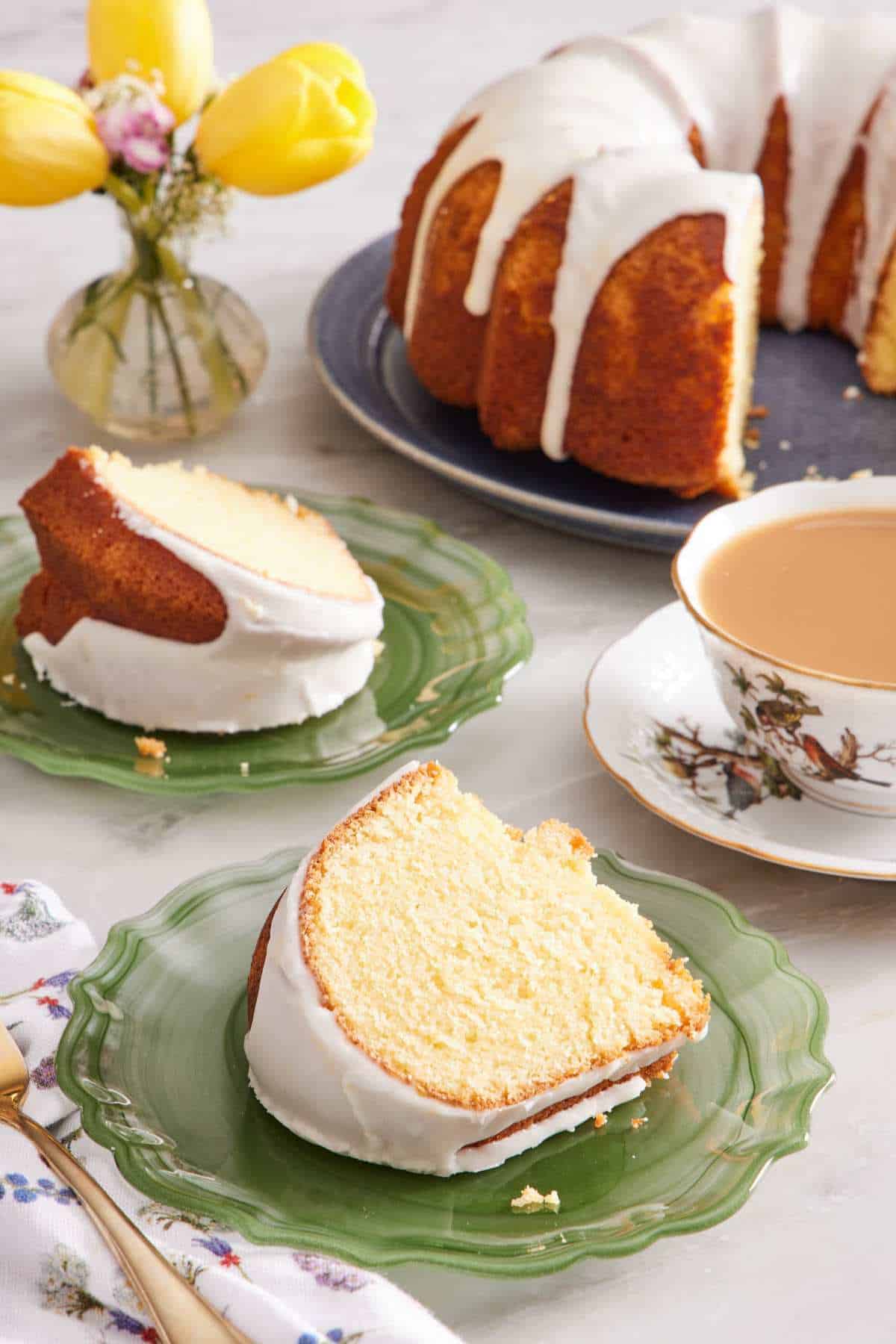
Frequently Asked Questions
Store lemon bundt cake in an airtight container at room temperature for 3 to 4 days.
Yes. Once it has cooled completely, wrap the whole cake or slices tightly in plastic wrap and aluminum foil and freeze in a bag or container for up to 3 months. Thaw overnight in the refrigerator or on the counter for a few hours.
You can divide the lemon bundt cake batter between two greased and lined 8×4-inch loaf pans. The bake time should be 40 to 50 minutes. Or, try my lemon pound cake recipe if you are looking for a lemon loaf cake!
If you’ve tried this lemon bundt cake recipe, then don’t forget to rate it and let me know how you got on in the comments below. I love hearing from you!



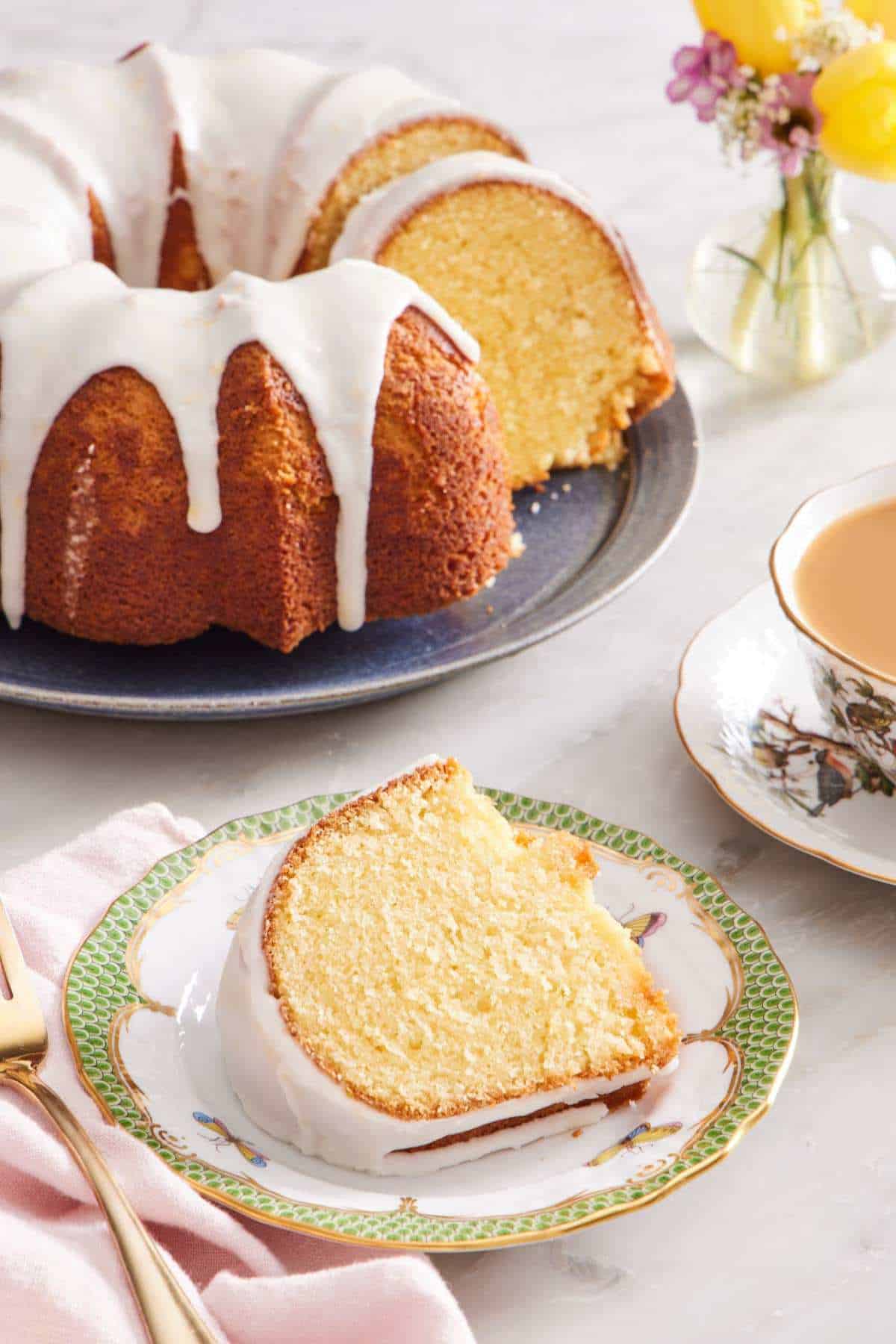
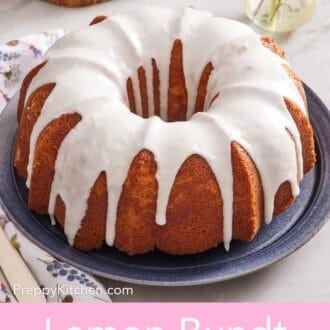


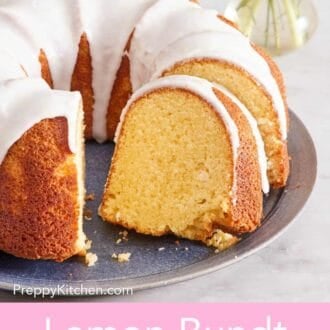
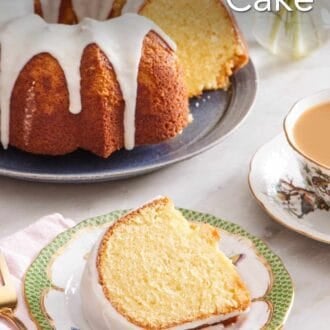
Rando says
Nice….
Pamela Lee says
I made this recipe past weekend and it was perfect! I got a lot of compliments on how moist it was and the flavor!